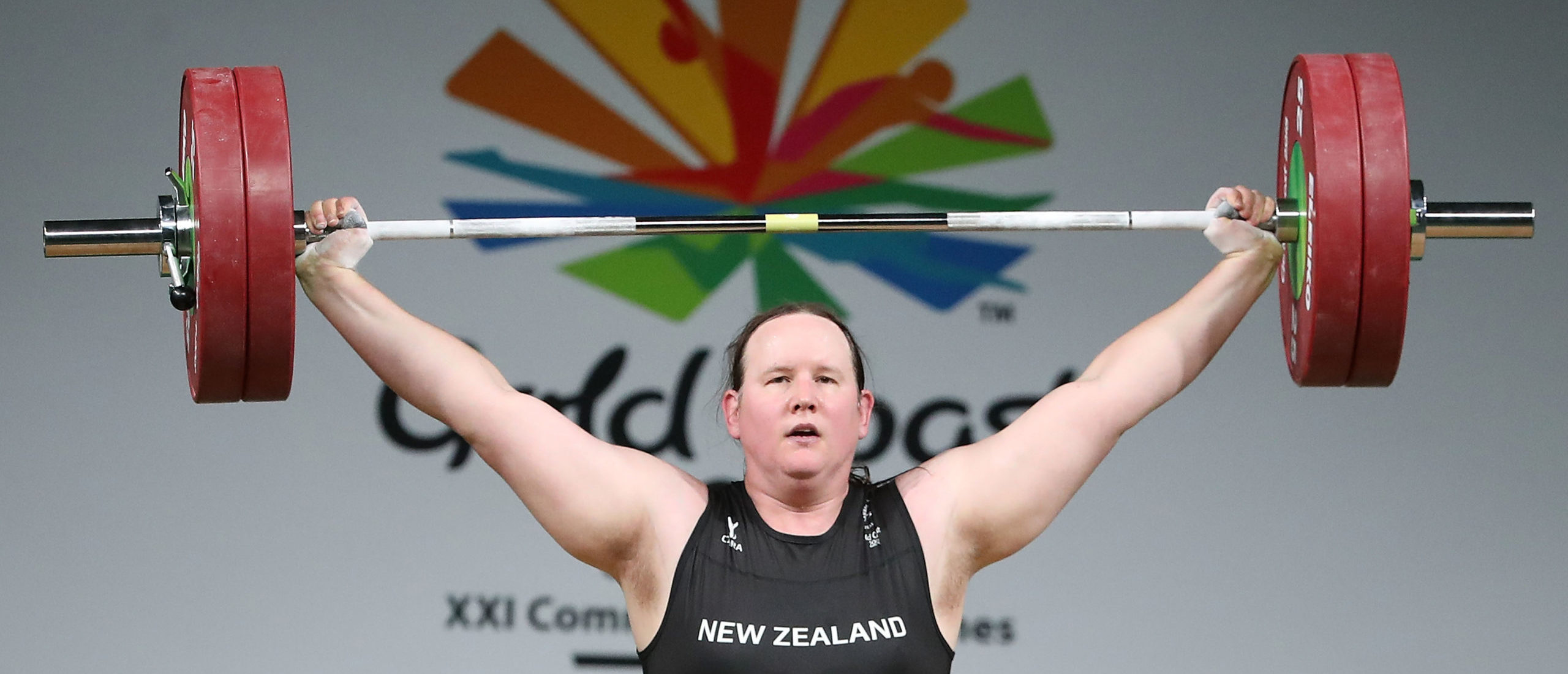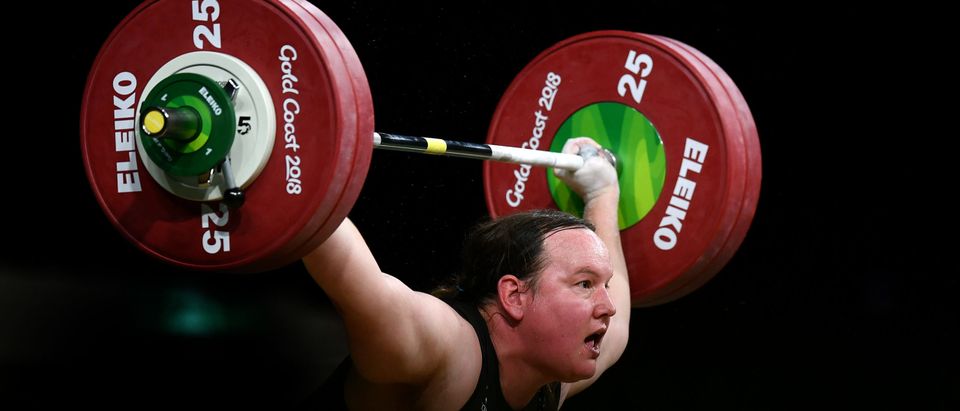A new study shows that male athletes transitioning to women experience only a slight decrease in muscle mass, according to The Guardian.

Laurel Hubbard of New Zealand competes in the Women’s +90kg Final during the Weightlifting on day five of the Gold Coast 2018 Commonwealth Games at Carrara Sports and Leisure Centre on April 9, 2018 on the Gold Coast, Australia. (Photo by Scott Barbour/Getty Images)
“The muscular advantage enjoyed by transgender women is only minimally reduced when testosterone is suppressed,” the Sports Medicine study says, according to The Guardian. The study shows that trans women athletes [biological males] retain a greater advantage than biological females because the former only loses about five percent of lean body mass, muscle area and strength, The Guardian reported. (RELATED: We Spoke With This Former Olympian About Transgender Athletes. Here’s What She Said)
In sports that require more muscle mass and explosive strength, including golf, weightlifting and bowling, biological men have about a 29 to 52 percent advantage compared to women, The Guardian reported. In endurance sports such as running and swimming, the gap is about 10 to 13 percent, according to The Guardian.
“Performance differences larger than 20 percent are generally present when considering sports and activities that involve extensive upper body contributions,” the study adds. “The gap between fastest recorded tennis serve is 20 percent, while the gaps between fastest recorded baseball pitches and field hockey drag flicks exceed 50 percent.”
The International Olympic Committee’s guidelines state that transgender women can compete in female sports if they suppress their testosterone below 10 nanomoles per liter for at least twelve months before competition, The Guardian reported. The study states that even when testosterone is suppressed to about one nanomole per liter, it does not change muscle mass in any significant way, according to The Guardian. The study states that the IOC will need to reassess its current guidelines, The Guardian reported.
“Testosterone-driven puberty, as the driving force of development of male secondary sex characteristics, underpins sporting advantages that are so large no female could reasonably hope to succeed without sex segregation in most sporting competitions,” the study states, according to The Guardian.


